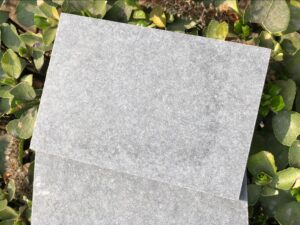 That is a common and frustrating issue with painting any cementitious surface, including fiber cement board.
That is a common and frustrating issue with painting any cementitious surface, including fiber cement board.
The peeling or failure of a sealer (or paint) is almost always due to a lack of proper adhesion, which can be traced back to a few key culprits:
- Improper Surface Preparation
Fiber cement is a dense, cement-based material, and it must be clean and prepared correctly for anything to bond permanently.
- Dirt, Dust, and Chalk: If the board was not thoroughly cleaned before the sealer was applied, the sealer is not sticking to the board—it’s sticking to a thin layer of dirt, dust, or powdery residue (chalking from a previous coating). This layer quickly loses cohesion, and the sealer peels right off.
- Contaminants: Residues like mold/mildew spores, oils, or release agents from the manufacturing process will prevent a strong bond.
- Moisture: Applying a sealer to a board that is even slightly damp will prevent the sealer from penetrating and bonding correctly. As the moisture later tries to escape, it pushes the coating off, causing blistering and peeling.
- Alkalinity (The Chemical Issue)
Cement-based products have a naturally high alkaline (high pH) surface.
- Primer Failure: If the fiber cement board was raw (unprimed) and the sealer or primer used was not specifically formulated to resist high alkalinity, the cement can chemically break down the bonding agents in the product. This causes the coating to fail prematurely.
- Corrective Action: You must use a high-quality acrylic primer or a specialized cement/masonry sealer that is pH-resistant before applying your final topcoat or sealer.
- Wrong Product or Compatibility Issues
Not all paints or sealers work on cement board.
- Incompatible Type: Oil-based or alkyd paints/sealers are often less flexible and may not adhere well to the cement surface, leading to early cracking and peeling as the board naturally expands and contracts. 100% acrylic or acrylic latex products are generally recommended for fiber cement due to their flexibility and breathability.
- Applying Over a Failing Coat: If you applied the new sealer over an old layer of paint or primer that was already weak or peeling, the new sealer will only stick as well as the old layer. When the old layer fails, it takes the new one with it.
- Moisture Intrusion (From Behind the Board)
Peeling can indicate that water is getting behind the board and trying to escape out through the front.
- Improper Installation: If the siding or board was installed without the manufacturer’s required clearance from the roof, ground, or decks, the board can wick up moisture.
- Unsealed Edges/Joints: Fiber cement absorbs water at cut edges much more easily than on the face. If cut edges or joints were not properly sealed or flashed during installation, moisture can get in, causing the board to swell slightly and the paint to peel, often starting at those areas.
✅ How to Prevent Future Peeling
- Clean Thoroughly: Wash the surface completely, removing all dirt, mildew, and chalkiness. Rinse well and allow the board to dry completely (often 24-48 hours).
- Scrape/Sand Off All Peeling Material: Remove all loose, flaking material. Feather the edges of the existing coating to create a smooth transition.
- Use the Right Primer: Apply a coat of 100% acrylic primer specifically formulated for masonry or cementitious surfaces. This creates a proper bonding layer and seals against alkalinity.
- Use the Right Topcoat: Use a high-quality, 100% acrylic exterior paint or sealer. Follow the manufacturer’s recommended drying times between coats.
3
NOV
2025
NOV
2025
0
